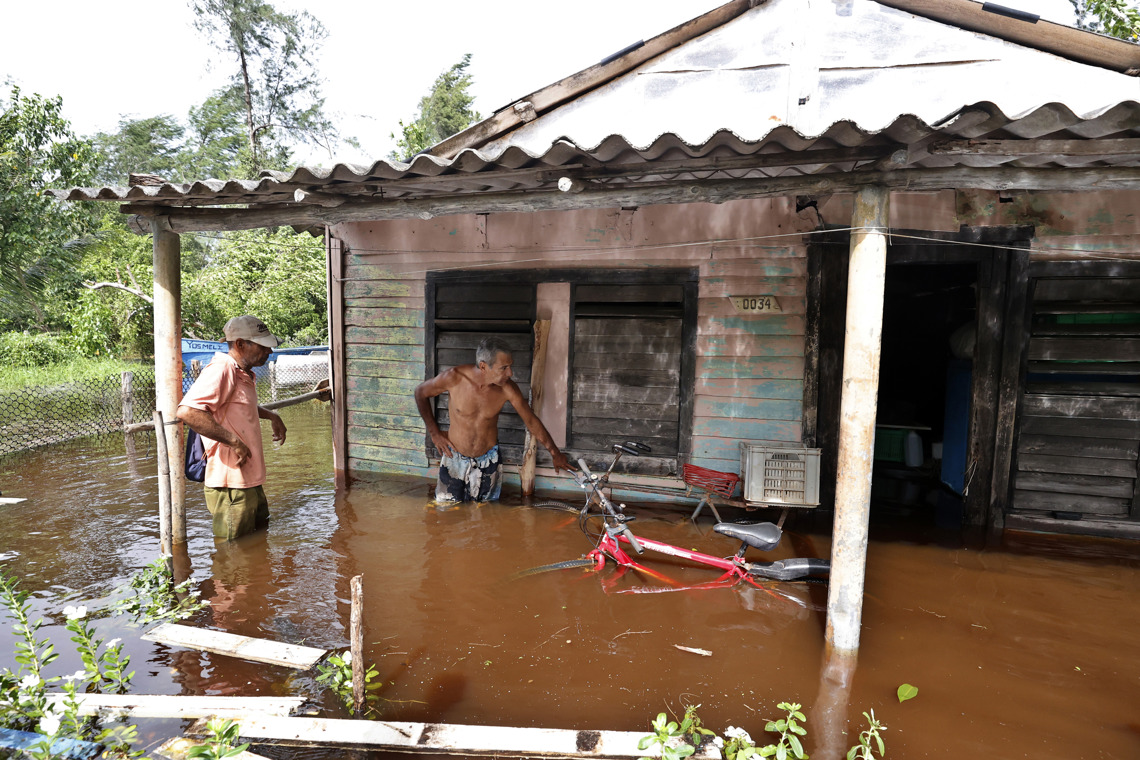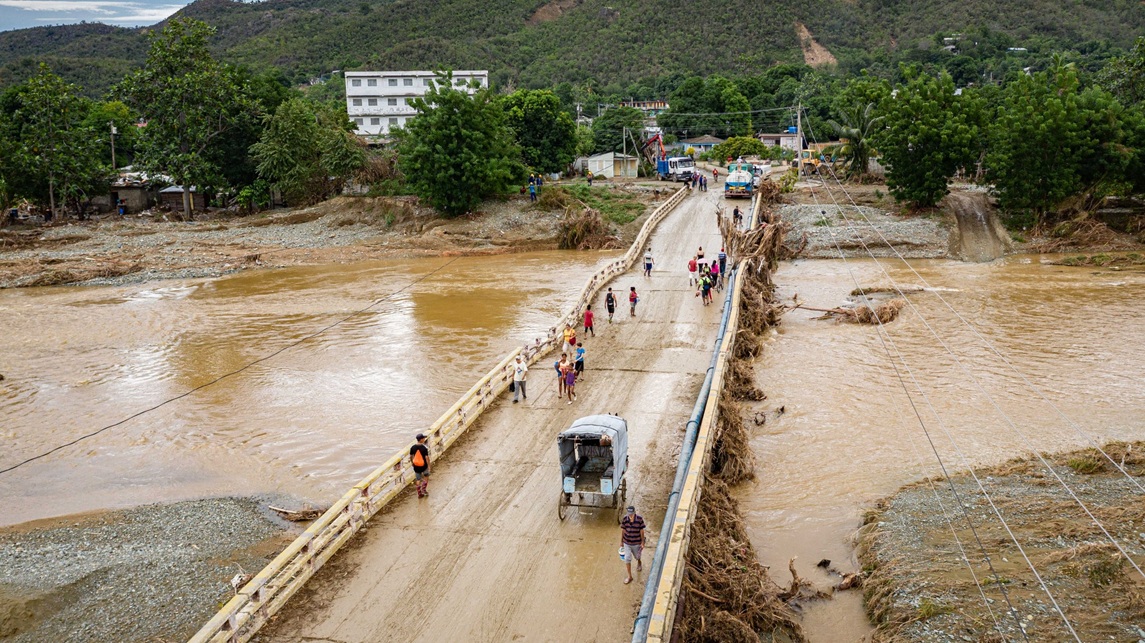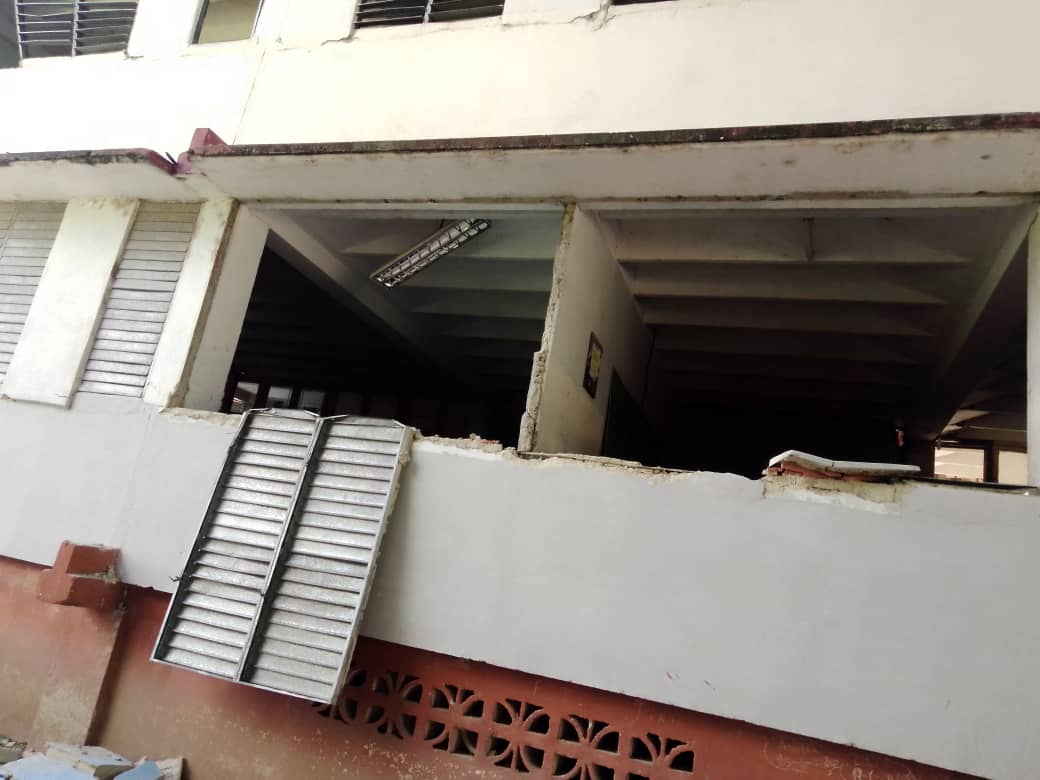Natural disasters combined in an unusual way at the end of the year for Cuba. The hurricane season left a record of two hurricanes that directly hit the national territory. When this period was about to end, which extends from June 1 to November 30, two strong earthquakes shook a large part of the country, to which a third was added that at the end of December put the eastern zone on guard again.
At the end of June, there was a warning about the imminence of a “very active” hurricane season. The first alarm was raised with the formation of Hurricane Beryl, the first to reach Category 5 this year. Its passage through southern Cuba did not cause major damage, however, eastern towns such as Guamá, Niquero or Manzanillo reported severe storm surges and storms, associated with its feeder bands.

The alarms were issued again three months later, when Hurricane Helene passed between Cape San Antonio and the Yucatán Peninsula.
In Pinar del Río there were damages to the electrical service, agriculture and housing. Accumulated rainfall was also notable.
In general terms, Helene was the most catastrophic tropical cyclone of this year, and the second deadliest to hit the United States, behind Katrina, the deadly 2005 hurricane, according to the Cuban Institute of Meteorology (INSMET) in its summary of the year.
For Cuba, on the other hand, the month of October reported the greatest damage. Three tropical organisms directly threatened the national territory.

At the beginning of the month, Hurricane Milton hit Cape San Antonio, with winds and flooding in areas such as Surgidero de Batabanó and Mayabeque. In addition, it caused heavy rains in Isla de la Juventud, Pinar del Río and Artemisa.
Days later, Oscar arrived, an organism that lasted only three days, but that initially hit the east of the country as a category 1. When it left land, a few hours later, the system was a tropical storm. It hit a point near the city of Baracoa, Guantánamo, and left diminished along the northern coast, near Gibara, Holguín.
The greatest damage in its path was reported in three mountainous municipalities of Guantánamo, over which the atmospheric phenomenon lasted almost 24 hours. It lashed the area with strong winds of about 130 kilometers per hour and intense rains that produced unusual floods.
Authorities estimated that nearly 600 mm of rain fell between Imías and San Antonio del Sur alone. According to information provided to the National Assembly in December, 65,278 customers were left without electricity, as there was considerable damage to transformers, poles and high-tension lines; in addition, thousands of homes were affected: 12,000, of which 10,000 remained unsolved in December.
This hurricane left 7 dead and caused extensive damage to infrastructure, such as broken bridges, roads blocked by fallen trees and overflowing rivers that caused unprecedented flooding.

Two weeks after Oscar entered Cuban territory, on November 6, another hurricane was again worrying Cubans, although this time the warnings were concentrated in the western zone. It was the eleventh cyclone of the season and was named Rafael. It was a category 3 when it crossed the island through Artemisa.
In addition to extensive damage to agriculture, the electrical grid was seriously affected in some areas. According to Granma newspaper authorities totaled 200,000 affected customers in Artemisa, 700,000 in Havana and 100,000 in Mayabeque. The number of affected transformers exceeded 600 and the number of fallen poles rose to more than 2,000. 1,500 dwellings were affected in Mayabeque by its winds, another 1,812 were damaged in Havana and some 1,930 in Artemisa, according to data provided by the government.

In total, according to INSMET, 2024 left 18 named storms, 11 reached hurricane category and 5 were of great intensity. It was an “above average, historic season with a pause during the climatological peak, to later have a record of cyclone formation in the final months,” according to the source.
Earthquakes
As for earthquakes, everything had remained uneventful until October. The network of stations of the National Research Center (CENAIS) was recording in May small telluric movements in the eastern zone and, even, in unusual places, such as the town of Santa Marta, in the Matanzas municipality of Cárdenas.

At the end of the year, two earthquakes occurred near Pilón, in Granma, which shook a large part of the country and there were even unusual reports of perceptibility in areas such as Florida, in the United States.
It was still hurricane season when on November 10 CENAIS registered a strong earthquake. It was recorded at around 10:50 am and its magnitude reached 6 degrees. The news captured everyone’s attention, but the matter did not end there. A second tremor, which was more powerful than the previous one, occurred in less than an hour. It had a magnitude of 6.7.
The consequences were ten people injured and thousands of homes damaged, according to a government report presented to the National Assembly. The collapse of roofs and walls, the cracking of columns and walls and broken roads were some of the consequences shown in the images that immediately caught the attention of users on social media.

According to a paper published by researchers Enrique Arango and Manuel A. Iturralde-Vinent in Cubadebate, the strongest earthquakes of the last 90 years in Cuba have occurred in Pilón and its surroundings.
As of December 16, more than 8,400 aftershocks had been recorded in the area near the epicenters of the earthquakes the previous month. More than a hundred were perceptible, with a magnitude greater than 2.5, including one of magnitude 4.1. “This behavior is normal after two earthquakes of that magnitude. The greater the magnitude of an earthquake, the longer the aftershock time,” Arango wrote on Facebook.
Almost at the end of the year, another earthquake, with a magnitude of 6.1, shook eastern Cuba again. Its center was reported 35 kilometers from Chivirico, in Santiago de Cuba, and just a few hours after it occurred, more than 200 aftershocks had already been recorded. According to authorities, the earthquakes affected at least 90 homes.










